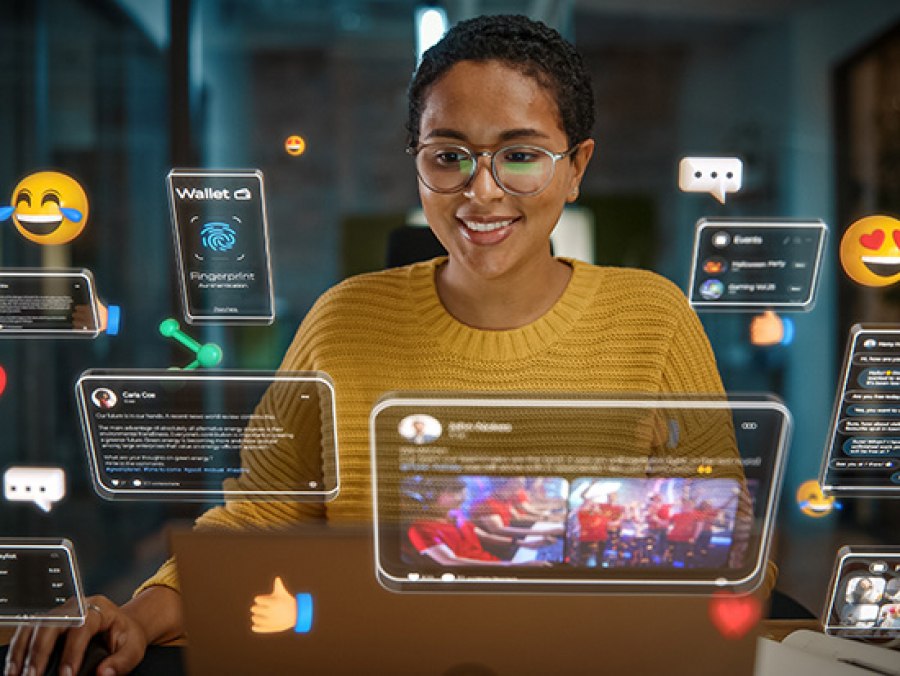Natalie Fischer is obsessed with making money online. Even though the 25-year-old has a master’s degree and landed a data analytics job that paid six figures, the Seattle-area resident has always had online side hustles. At one point, she was working up to an extra 30 hours a week by offering tips on personal finance as well as promoting products and brands across social media. In July, she quit her corporate job to become a full-time side hustler.“You just can’t rely on one income anymore,” said Fischer, who notes that she’s on track to make more money than her corporate job by end of year and expects that to increase “exponentially” in the years to come.A growing number of young workers like Fischer are taking on side hustles to make extra cash, develop their skills, build their relationships and release creative energy by selling online tutorials, products and services and influencing on social media. Gen Zers — those born after 1996 — grew up with access to digital devices and the internet their entire lives, and many are keen on using them to make money. They also came of age during the 2008 financial crisis, spent some of their formative years of school during pandemic lockdowns and saw companies lay off thousands of workers in the aftermath.Digital side hustles have low entry barriers to make additional income, and they’re often aspirational for young people who grew up watching social media influencers, said academics who study business and entrepreneurship.“Now you can easily spin something up,” said Aaron McDaniel, adjunct professor of entrepreneurship and innovation at the University of California at Berkeley’s Haas School of Business. “Platforms … help you take a creative outlet and make money.”Fischer found her niche posting content on personal finance — something she initially did for fun. She loved the idea of someday being her own boss and had taken a few social media marketing and entrepreneurship courses online. But when she started posting on Instagram about her journey as a first-time investor in the stock market during the coronavirus pandemic, she quickly attracted an audience. She turned inbound questions into TikToks and gained more than 56,000 followers there, allowing her to get sponsorships and create content for brands.“People were loving it, but also some were hating it,” Fischer said about her first TikToks. “I’m Asian and I look young so people were like, ‘How can this girl be talking about investing when she doesn’t look old enough to walk to school?’”But age hasn’t stopped Gen Z from making the most of what they know. Colin Stroud, a 24-year-old in Columbus, Ohio, found his digital side hustle after gaining traction from a LinkedIn post about how to get to Hawaii on credit card reward points. So Stroud, who is between jobs, started posting what he already knew from his research on traveling with points. Before he knew it, people were asking him for personalized advice and help planning trips.Now he charges $150 for a 75-minute consultation and $175 for trip planning. Stroud said he and his wife, who’s doing brand deals on social media, made $3,000 side-hustling last month. Previously, the pair was living paycheck to paycheck.“Things have changed to be able to just afford the normal stuff in suburban middle-class America,” Stroud said. “You have to do extra stuff to do that.”Some young workers are undertaking digital side hustles while working full-time and going to school. The side gigs help with the increasing cost of living and building skills and résumés to get the jobs that they want.“The majority of our college life was online,” said Mariz Isabella Ash, a 22-year-old Huntington Beach, Calif., resident. “We didn’t really have that time to make connections at the university … and a lot of entry-level jobs are going to people recently laid off from the big companies.”Ash, who is expected to graduate from California State University at Long Beach in the spring of 2025, has a full-time job in sales at a drug and medical device manufacturer. But she also gets paid to help companies, organizations and individuals with social media and sometimes babysits through the app Bambino Sitters. Ash sees side hustles as “essential” in today’s economy. Even though she works up to 60 hours or more a week, she expects to always have side gigs, even when she’s more established.Many young workers consider diversifying their income important, especially after watching jobs vanish during the pandemic or the course correction after.Jess Ramos, an Athens, Ga.-based senior data analyst at Crunchbase, says she’s made more money through her digital side hustles than from her six-figure salary so far this year. The self-proclaimed Zillennial, or someone on the cusp of Gen Z and Millennials, does everything — including sponsored posts on Instagram, TikTok and LinkedIn as well as teaching people how to get a job in data analytics and technical skills on LinkedIn Learning. She also has a shop on Printify, which prints and ships products, where she sells T-shirts for data enthusiasts.Ramos views side hustles as the chance to have financial freedom, including being able to splurge on luxury items like a Prada purse, and as a creative outlet. Still, she plans to continue building her corporate career.“I always want to be growing in title and skill, but I realized it’s okay to also focus my attention elsewhere,” she said. “My [personal] brand is what’s going to be with me my whole life.”While older generations sometimes view young workers as lazy or idealizing social media fame, many Gen Zers say the reality is the opposite. They say they just understand how to make money on social media, are willing to put in extra work, are faced with tough economic conditions and are bringing their personalities into their work.For 24-year-old Ang Richard of Boston, she said she makes between a couple hundred to a few thousand extra dollars a month advertising and selling private career coaching on LinkedIn, doing speaking gigs and course facilitation. Most of her side gigs have come from positioning herself as an authoritative voice for Gen Z as the assistant director of career education at Boston University’s Center for Career Development, where she works full-time.She already garnered a Top Voice badge on LinkedIn, signifying she’s a thought leader in her industry. Now she’s looking into growing her following on platforms like TikTok.“I want to show my family and others that there are ways to find success, express yourself and break away from archaic professional money mindsets,” she said.But some experts say young people should be wary of side hustles online. It takes a lot of time and hard work, and there’s more appetite for some topics and personalities versus others, said Lindsey Cameron, an assistant professor of management at the Wharton School of the University of Pennsylvania.“You get to live an idealized version of yourself. But there are a limited number of advertising dollars to go around. Not everyone will be able to be successful,” Cameron said.Fischer and other young workers expect Gen Z’s interest in side hustles to continue to grow as companies cut costs and trim benefits.“There’s a lot of distrust with companies. Loyalty is dead now,” Fischer said.
https://www.washingtonpost.com/technology/2024/03/25/gen-z-side-hustles/



